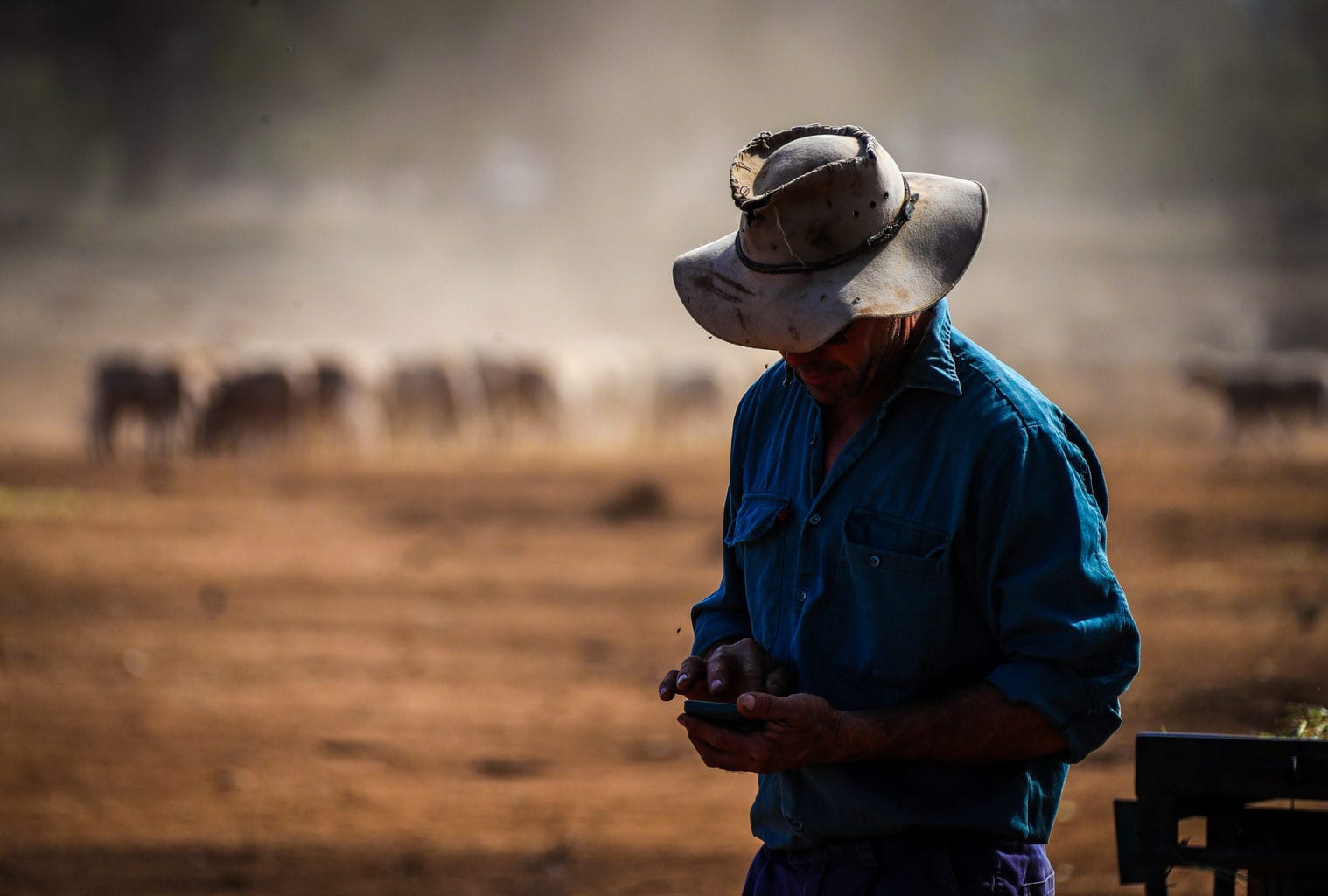
Grappling with how to price ‘drought risk’, global lenders are charging farmers higher levels of interest. Could Australian producers feel the heat?
Internationally, lenders are pricing in ‘drought risk’, leading to farmers in drought-prone areas paying more interest on their loans. And this could also impact Australian farmers.
A global study from Monash Business School using US data shows that farmers in drought-prone areas are charged more interest on their bank loans than other borrowers.
The paper by Dr Viet Do, Dr Hannah Nguyen, Professor Cameron Truong and Dr Tram Vu, investigates how climate risk impacts on how expensive a bank loan is.
“We decided to focus on drought risk because drought is considered to have one of the most damaging natural disaster impacts on the global economy,” says Dr Hannah Nguyen from Monash Business School’s Department of Banking and Finance.
While the study is based on US data, the authors would not be surprised if similar findings were found outside the US.
Could this impact Australian farmers?
As Dr Tram Vu explains, the fundamental connection between borrower risk and borrowing cost is universal and she believes it should also hold here in Australia.
“Our lending practice, however, is unique. Australian agricultural lending is largely relationship-based and heavily hinges on individual loan manager’s local farming knowledge. In fact, several loan managers are also farmers themselves,” she says.
“The vast majority of our Australian agricultural businesses are family-owned and they often have very strong equity on the balance sheets. This is because farms are inherited through several generations and equity accumulates over time.”
Dr Vu admits there should be more nuances in how bank loans are established for Australian agricultural businesses. “This is something we would like to uncover,” she says.
Another difference between Australia and the United States is that drought is more sporadic in the United States, whereas Australia as a whole has been through several major drought episodes.
“Our research continues to explore the significance of these firm-level and institutional differences in the pricing and non-price features of agricultural loans,” Dr Viet Do says. “We are especially interested in studying the role of bank-borrower relationship for debt financing in Australia.”
The team is already looking to extend this project into the Australian market and has already been in contact with a number of Australian financial institutions, the Bureau of Meteorology, and Australian farming groups.

Calculating the drought-risk
Using a sample of private bank loans in the United States from 1984 to 2016 the research investigates whether banks take into account previous drought levels when setting loan prices by adding ‘drought risk’ to their loan pricing models.
The study found that banks charge higher interest rates to those in drought-affected areas – especially for farmers located in these areas who produce food.
However, not all banks price drought risk equally.
Banks with experience in lending to drought-affected borrowers charge lower premiums than those that are less experienced.
The study uses the PDSI index to measure drought – the most widely used measure in the United States and first developed in 1965 to evaluate the severity and frequency of abnormally dry periods.
Precipitation, as well as surface air temperature, is used by this measure which therefore takes into account the impact of global warming.
The index ranges from -10 to +10 with the lower the value of the index, the drier it is. Normal conditions are in the range of -0.5 to 0.5, with a PDSI below -0.5 suggesting drought conditions.
Lenders pay more
The study combines PDSI with data on the loan and borrower characteristics which is obtained from the Loan Pricing Corporation Dealscan database and the Merged CRSP Compustat database.
It finds that a food industry business in a drought-prone area with a loan of around US$402 million, is paying approximately US$284,616 each year in additional interest compared to a borrower in a low drought-prone area.
Dr Viet Do suggests that lenders perceive recent drought conditions affecting borrowers, especially food industry firms, as an additional layer of risk and attach an interest premium to this new factor.
“We conjectured that drought risk is a relatively new type of risk, hence lenders are still learning to price it appropriately. More experienced lenders may understand and manage this risk better and therefore price it more accurately. Less experienced lenders, in trying to protect their exposure, may have a tendency to overprice it,” he says.
While the study shows borrowers can not entirely avoid the drought risk premium, it is possible they can mitigate it.
“Drought-affected borrowers appear to receive more competitive pricing when acquiring loans from more experienced banks. The experience is derived from the extent to which their banks have lent to borrowers located in drought-prone areas in the past prior to the given loan,” Dr Viet Do says
“Borrowers with easy and affordable access to capital markets (for example, investment-grade borrowers) also face a lower risk premium for their drought risk exposure relative to unrated and non-investment grade firms.”
Climate risk
According to Dr Nguyen, it’s from this position that policymakers must consider the impact of weather and climate risk on borrowing costs in designing subsidy programs for vulnerable groups of agricultural borrowers.
“Our study points towards increasing awareness of weather risk and climate change risks in capital markets,” she says.
Professor Cameron Truong explains while integrating weather and climate change risks into the lending process can prove to be challenging, with tools and best practices not yet well established, our study shows how lenders engage such risks in their lending decisions.
“Banking practice, modelling, and product innovations should formally take weather and climate considerations into account,” he says.


